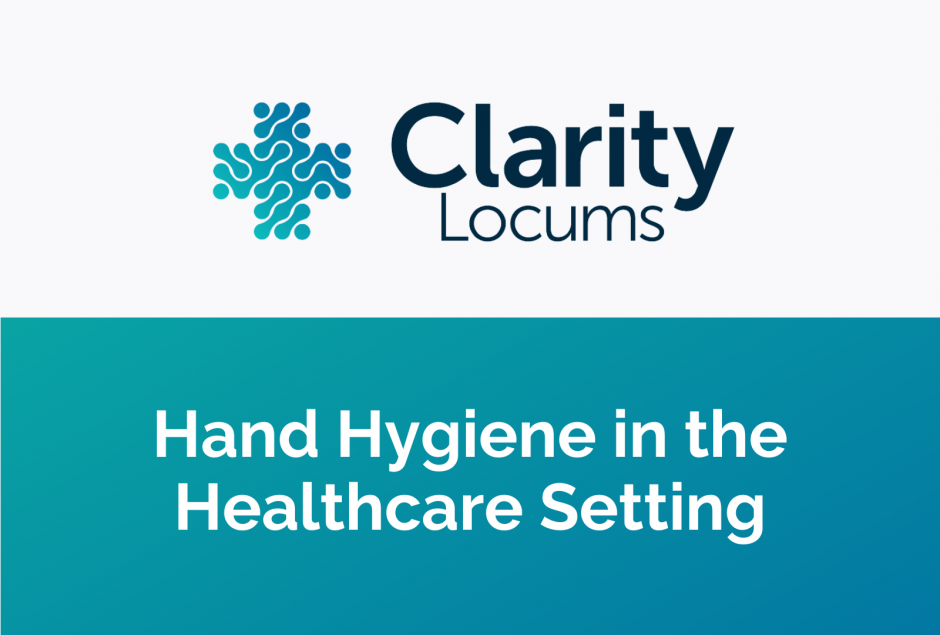Hand Hygiene in the Healthcare Setting
Why is hand hygiene important when working as a nurse in healthcare settings?
Hand hygiene is one of the most important ways to prevent the spread of infections, including the common cold, flu, and even the hard-to-treat infections such as MRSA. Following admission to Irish hospitals, approximately 1 in 20 patients acquire an infection (3). Infections that are acquired in hospitals can be harder to treat and many can be resistant to antibiotics, putting patients who are more vulnerable at risk.
The incidence of healthcare-associated infections (HCAI) and transmission of pathogens in healthcare settings can be reduced by effective hand hygiene techniques (1). One of the aims of the National Clinical Programme on HCAI and Antimicrobial Resistance (AMR) is improving hand hygiene. The first national guidelines for hand hygiene in the healthcare setting were published in 2005 by the Strategy for the Control of Antimicrobial Resistance in Ireland (SARI). In 2009, the World Health Organization (WHO) issued comprehensive evidence-based guidelines on hand hygiene in healthcare, which introduced the ‘5 moments of hand hygiene’, which have been widely internationally adopted (2).
The 5 moments of hand hygiene according to the World Health Organisation:
- Indications for hand hygiene 5 moments for hand hygiene:
- immediately before each episode of direct patient contact or care
- immediately before a clean/aseptic procedure
- immediately after contact with body fluids or excretions, mucous membranes, non-intact skin or wound dressings
- immediately after each episode of direct patient contact or care
- immediately after contact with objects and equipment in the immediate patient environment

Other Indications for Hand Hygiene:
- when visibly dirty, or soiled with blood or other body fluids
- after using the toilet
- before preparing medication
- before preparing food
- before putting on gloves
- immediately after removing gloves
A note on glove use:
The use of gloves does not replace the need for hand hygiene! When using gloves, clean hands before putting on gloves and after taking off gloves
Extra Tips and Reminders:
- When delivering clinical care, bare the wrists (e.g. short sleeved top or rolled up sleeves)
- Remove all wrist jewellery, including wristwatch
- Remove all hand jewellery (a single plain band may be worn)
- Keep fingernails short (tips less than 0.5cm) Do not wear false nails or nail enhancements (e.g. gel nails) Do not wear nail varnish
- Cover cuts and abrasions with a waterproof dressing
Should I use Alcohol Hand Rub or Soap and Water?
Use an alcohol hand rub for hand hygiene, except in the following situations when hands must be washed with soap and water(1) :
- when hands are visibly soiled
- when caring for patients known or suspected to have Clostridium difficile infection
Using alcohol hand Gel:
- You may use this if your hands are not visibly dirty.
- Use enough alcohol hand gel to coat your hands and rub together making sure that all parts of the hands are covered.
- Follow the manufacturer’s instructions for application times. Apply sufficient volume of hand rub solution to cover hands and wrists
- The hand rub solution must come into contact with all surfaces of the hands and wrists
- Rub hands together vigorously until the solution has evaporated and hands are dry
Using Soap and Water:
- Using soap with warm water, wet your hands with warm water. Apply a small amount of soap onto your hands.
- Rub your hands together until soap forms a lather and then rub all over your hands including your thumbs, in between your fingers and the area around and under the fingernails. Rub hands together vigorously for a minimum of 15 seconds
- Rinse hands thoroughly
- Do not use clean hands to turn off taps
- If taps are not hands-free, use paper towel to turn off tap
- Dry hands thoroughly with disposable paper towels
- Discard towel into hands-free non-risk waste bin
See picture below for parts of the hands that are most often missed when cleaning hands(3).

Continuous Professional Development for Agency Nurses:
As part of agency nursing CPD, it is vital to have your AMRIC Hand Hygiene Module e-learning course completed. This is an online module that is freely available to agency nurses on the database HSEland. Clarity Locums can be found on HSEland if you haven’t signed up to this database before.
References
- Health Protection Surveillance Centre. 2005. Guidelines for hand hygiene in Irish healthcare settings Update of 2005 guidelines January 2015. (Online) Available here.
- World Health Organisation. 2009. Guidelines on Hand Hygiene in Health Care.
- Tallaght University Hospital. The Importance of Hand Hygiene. (Online) Available here.
Posted on 12 February 2024 by Laura Mulchrone




